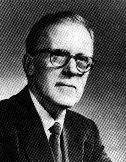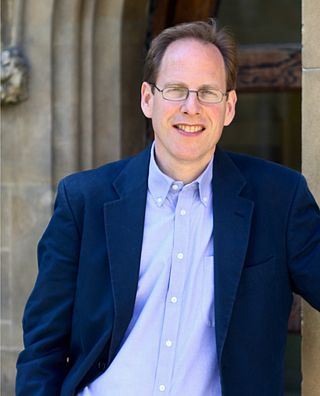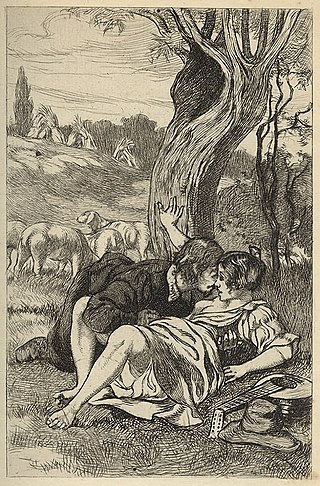Related Research Articles

Neuroscience is the scientific study of the nervous system, its functions and disorders. It is a multidisciplinary science that combines physiology, anatomy, molecular biology, developmental biology, cytology, psychology, physics, computer science, chemistry, medicine, statistics, and mathematical modeling to understand the fundamental and emergent properties of neurons, glia and neural circuits. The understanding of the biological basis of learning, memory, behavior, perception, and consciousness has been described by Eric Kandel as the "epic challenge" of the biological sciences.
Psychophysiology is the branch of psychology that is concerned with the physiological bases of psychological processes. While psychophysiology was a general broad field of research in the 1960s and 1970s, it has now become quite specialized, based on methods, topic of studies and scientific traditions. Methods vary as combinations of electrophysiological methods, neuroimaging, and neurochemistry. Topics have branched into subspecializations such as social, sport, cognitive, cardiovascular, clinical and other branches of psychophysiology.

Stress, whether physiological, biological or psychological, is an organism's response to a stressor such as an environmental condition. When stressed by stimuli that alter an organism's environment, multiple systems respond across the body. In humans and most mammals, the autonomic nervous system and hypothalamic-pituitary-adrenal (HPA) axis are the two major systems that respond to stress. Two well-known hormones that humans produce during stressful situations are adrenaline and cortisol.

Donald Olding Hebb was a Canadian psychologist who was influential in the area of neuropsychology, where he sought to understand how the function of neurons contributed to psychological processes such as learning. He is best known for his theory of Hebbian learning, which he introduced in his classic 1949 work The Organization of Behavior. He has been described as the father of neuropsychology and neural networks. A Review of General Psychology survey, published in 2002, ranked Hebb as the 19th most cited psychologist of the 20th century. His views on learning described behavior and thought in terms of brain function, explaining cognitive processes in terms of connections between neuron assemblies.

The fight-or-flight or the fight-flight-freeze-or-fawn is a physiological reaction that occurs in response to a perceived harmful event, attack, or threat to survival. It was first described by Walter Bradford Cannon. His theory states that animals react to threats with a general discharge of the sympathetic nervous system, preparing the animal for fighting or fleeing. More specifically, the adrenal medulla produces a hormonal cascade that results in the secretion of catecholamines, especially norepinephrine and epinephrine. The hormones estrogen, testosterone, and cortisol, as well as the neurotransmitters dopamine and serotonin, also affect how organisms react to stress. The hormone osteocalcin might also play a part.
Psychoneuroimmunology (PNI), also referred to as psychoendoneuroimmunology (PENI) or psychoneuroendocrinoimmunology (PNEI), is the study of the interaction between psychological processes and the nervous and immune systems of the human body. It is a subfield of psychosomatic medicine. PNI takes an interdisciplinary approach, incorporating psychology, neuroscience, immunology, physiology, genetics, pharmacology, molecular biology, psychiatry, behavioral medicine, infectious diseases, endocrinology, and rheumatology.

Sir Simon Philip Baron-Cohen is a British clinical psychologist and professor of developmental psychopathology at the University of Cambridge. He is the director of the university's Autism Research Centre and a Fellow of Trinity College.
Acute stress reaction and acute stress disorder (ASD) is a psychological response to a terrifying, traumatic or surprising experience. Combat stress reaction (CSR) is a similar response to the trauma of war. The reactions may include but are not limited to intrusive or dissociative symptoms, and reactivity symptoms such as avoidance or arousal. It may be exhibited for days or weeks after the traumatic event. If the condition is not correctly addressed, it may develop into post-traumatic stress disorder (PTSD).
Biological psychiatry or biopsychiatry is an approach to psychiatry that aims to understand mental disorder in terms of the biological function of the nervous system. It is interdisciplinary in its approach and draws on sciences such as neuroscience, psychopharmacology, biochemistry, genetics, epigenetics and physiology to investigate the biological bases of behavior and psychopathology. Biopsychiatry is the branch of medicine which deals with the study of the biological function of the nervous system in mental disorders.
Neuroendocrinology is the branch of biology which studies the interaction between the nervous system and the endocrine system; i.e. how the brain regulates the hormonal activity in the body. The nervous and endocrine systems often act together in a process called neuroendocrine integration, to regulate the physiological processes of the human body. Neuroendocrinology arose from the recognition that the brain, especially the hypothalamus, controls secretion of pituitary gland hormones, and has subsequently expanded to investigate numerous interconnections of the endocrine and nervous systems.
This article is a general timeline of psychology.
Nocturnal penile tumescence (NPT) is a spontaneous erection of the penis during sleep or when waking up. Along with nocturnal clitoral tumescence, it is also known as sleep-related erection. Men without physiological erectile dysfunction or severe depression experience nocturnal penile tumescence, usually three to five times during a period of sleep, typically during rapid eye movement sleep. Nocturnal penile tumescence is believed to contribute to penile health.
Robert Galbraith Heath was an American psychiatrist. He followed the theory of biological psychiatry, which holds that organic defects are the sole source of mental illness, and that consequently mental problems are treatable by physical means. He published 425 papers and three books. One of his first papers is dated 1946. He was profiled as a "famous American psychiatrist" in 1983 by Psychiatric Annals.
James Olds was an American psychologist who co-discovered the pleasure center of the brain with Peter Milner while he was a postdoctoral fellow at McGill University in 1954. He is considered to be one of the founders of modern neuroscience and received numerous distinctions ranging from election to the United States National Academy of Sciences to the Newcomb Cleveland Prize of the American Association for the Advancement of Science.
Philip Holzman (1922–2004) was the Esther and Sidney R. Rabb Professor of Psychology Emeritus at Harvard University and one of the world’s preeminent scientists in schizophrenia research. His landmark studies of oculomotor function documented the presence of abnormal smooth pursuit eye movements in individuals with schizophrenia and their clinically unaffected biological relatives. He was one of the first to investigate the genetic basis of schizophrenia. Another key contribution to the study of schizophrenia was his work on language and thought disorder in individuals with schizophrenia. He also discovered the presence of an active short-term memory deficit in people with schizophrenia and their biological relatives.

Sexual arousal describes the physiological and psychological responses in preparation for sexual intercourse or when exposed to sexual stimuli. A number of physiological responses occur in the body and mind as preparation for sexual intercourse, and continue during intercourse. Male arousal will lead to an erection, and in female arousal, the body's response is engorged sexual tissues such as nipples, clitoris, vaginal walls, and vaginal lubrication.
Leon Glass is an American scientist who has studied various aspects of the application of mathematical and physical methods to biology, with special interest in vision, cardiac arrhythmia, and genetic networks.
Krešimir Krnjević was a Canadian-British neurophysiologist of Croatian extraction.
Laurence J. Kirmayer is a Canadian psychiatrist and internationally recognized expert in culture and mental health. He is Distinguished James McGill Professor and Director of the Division of Social and Transcultural Psychiatry, Department of Psychiatry, McGill University. He is a Fellow of the Canadian Academy of Health Sciences and the Royal Society of Canada
References
- ↑ Malmo, R.B. (1954). "Higher functions of the nervous system". Annual Review of Physiology. 16 (1): 371–90. doi:10.1146/annurev.ph.16.030154.002103. PMID 13171831.
- ↑ Cleghorn, R.A. (1984). "The emergence of psychiatry at McGill". Canadian Journal of Psychiatry. 29 (7): 551–556. doi:10.1177/070674378402900702. PMID 6391647. S2CID 25156641.
- ↑ "Past Presidents". Canadian Psychological Association. Retrieved 14 September 2020.
- ↑ "Fellows". Canadian Psychological Association. Retrieved 19 September 2020.